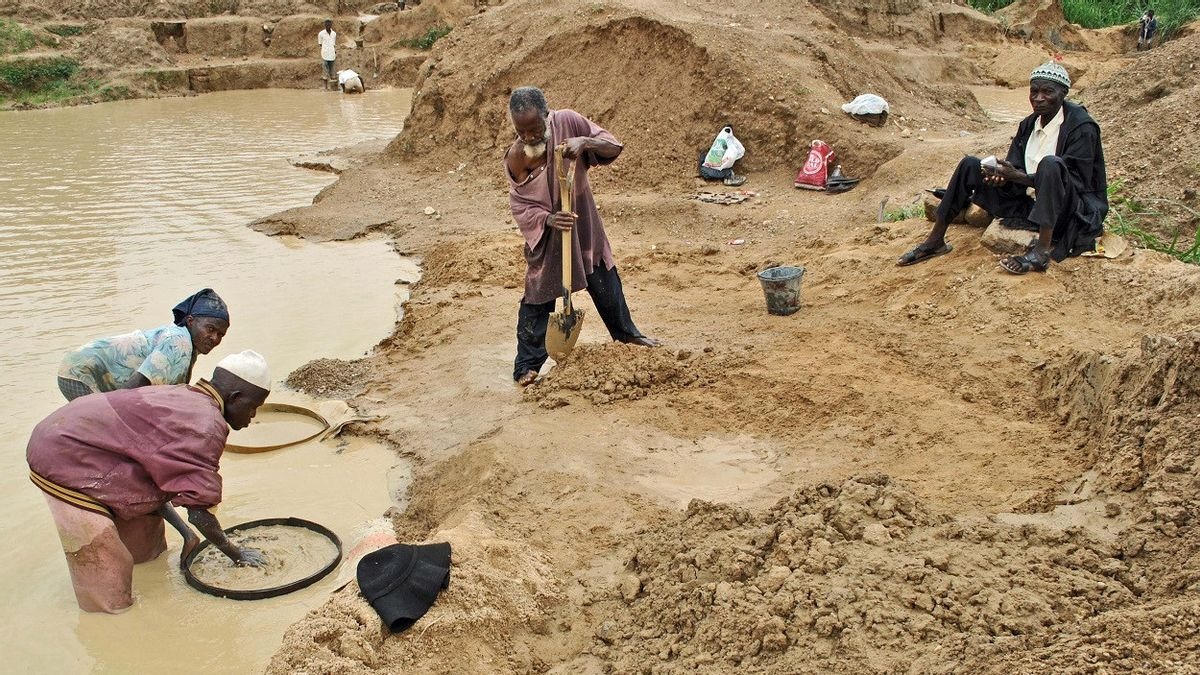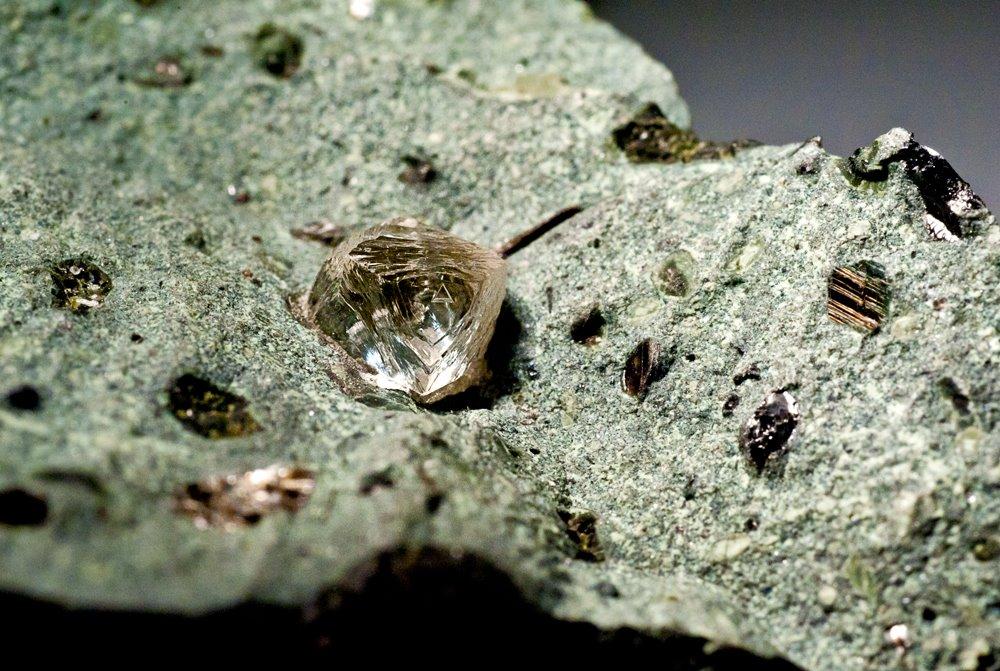The first diggings in South Africa, apart from isolated finds, were at Klip- drift (now called Canteen Kopje) on the banks of the Vaal river not far from Barkly West. On the edge of the pock-marked ground, reminiscent today of a World War One battlefield, a small flint obelisk has been erected to commemorate the event. The early days were well described by J. L. Babe in a now very rare book The South African Diamond Fields, published in New York in 1872. Babe was a rifle salesman, digger, inventor, and special correspondent of the New York World. He described the Vaal as a 'beautiful streamlined nearly all its length with fine trees . . . 200 feet wide opposite the great camps' (diggings).
He explained that the river alternated between stretches of smooth water like this, hardly ever more than a mile in length, and rapids. Immense tracts of water-worn pebbles were to be seen; around the undulating country which was about 5,000 ft (1,500 m) above sea level were dotted here and their hills covered with immense boulders of ironstone. During the months of June, July, and August, the river became very low. Diamonds were at first located by long lines of natives who joined hands and walked slowly over the ground, especially after rain. These were offered to traders at exorbitant prices according to Babe, who cites one of which the starting price was €2,500 - in the 1870s! It was sold after three days for €150. It was not until 1870, he wrote, that someone thought of organizing a prospecting company.
King William's Town provided one party that was sent to the Vaal under the leadership of Mr McIntosh. There were eight partners, four prospects and four of mine. A similar party started from Natal under Capt. Rolliston. The parties met at Hebron and, after early suspicions of each other were dispelled, agreed to work together on the west bank of the river. The local natives would not allow them to touch the ground with a pick and shovel, however. After three months of prospecting with sharp sticks only, the parties became dispirited and parted company, but agreed to inform each other of any finds. After another month, the McIntosh party was taken to drift or ford by a native where they found a half-carat stone in the soil at the roots of a thorn tree. They were forbidden from digging and sent for the Natal party, who, despite objections, used a pick and shovel to remove a load of ground which was washed in an Australian cradle at the river bank about a thousand yards away.
 They found diamonds and continued to do so. One day a native seized a 9-carat stone that the diggers had found. The diggers compelled him to return it and he complained to his chief who, surprisingly, backed the diggers. The parties tried to keep the news of their finds to themselves, but one day someone saw a 5-carat stone roll out of a pack. A trader named Stafford Parker became interested and wrote letters to the papers about the finds. Also, a young man named Slater wrote to his father in Port Elizabeth confirming the finds and urging his friends to come at once. These announcements started the rush. According to Babe, most of the newcomers went to Klipdrift and the Old Kopje. The two parties, who had started at the Old Kopje, were working a triangular area here. Old Kopje was soon taken up with 20 ft (6.1 m) claims.The diggers then moved on to the Second or Town Kopje, downriver, and to the Third or Colesburg Kopje, after the party that had found diamonds on it. According to the Grahamstown Journal of 12th August 1870, 'Every town in the colony has sent its contingent to the army of workers at the Vaal fields.
They found diamonds and continued to do so. One day a native seized a 9-carat stone that the diggers had found. The diggers compelled him to return it and he complained to his chief who, surprisingly, backed the diggers. The parties tried to keep the news of their finds to themselves, but one day someone saw a 5-carat stone roll out of a pack. A trader named Stafford Parker became interested and wrote letters to the papers about the finds. Also, a young man named Slater wrote to his father in Port Elizabeth confirming the finds and urging his friends to come at once. These announcements started the rush. According to Babe, most of the newcomers went to Klipdrift and the Old Kopje. The two parties, who had started at the Old Kopje, were working a triangular area here. Old Kopje was soon taken up with 20 ft (6.1 m) claims.The diggers then moved on to the Second or Town Kopje, downriver, and to the Third or Colesburg Kopje, after the party that had found diamonds on it. According to the Grahamstown Journal of 12th August 1870, 'Every town in the colony has sent its contingent to the army of workers at the Vaal fields. 
In May there were about one hundred men at the diggings. Before the end of June there were seven hundred, at the close of July there were over 1,000, and at present it is estimated that there are at the Klipdrift, Pniel, Hebron, and Kuskamana Fields no less than 2,000 men.' This news was reprinted in London and New York which attracted more fortune hunters so that by April 1871, there were about 5,000 diggers working along the Vaal, Modder and Orange rivers. Adventurers of all kinds, gold miners from Canada and Australia, Europeans in every walk of life, deserting seamen, honest men and riff-raff began to pour into South Africa on every ship. Many had then to earn enough money to make the long trek at about ten miles a day. A very small sprinkling of men had some diamond experience in India, Borneo, or Brazil, but most knew nothing of mining. Soon they abandoned their normal clothes and adopted the rough breeches and wide-brimmed hats of the Boers.
